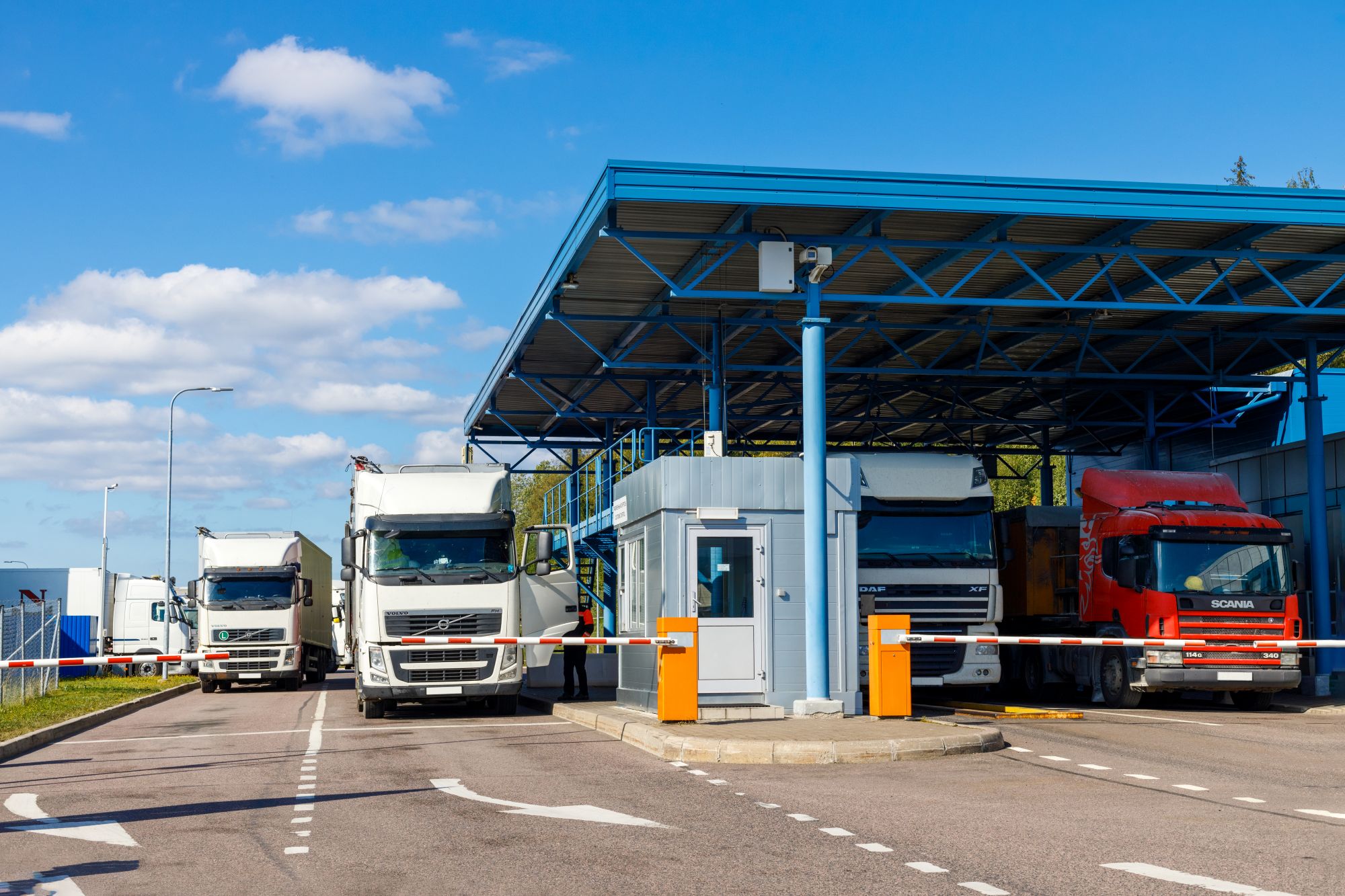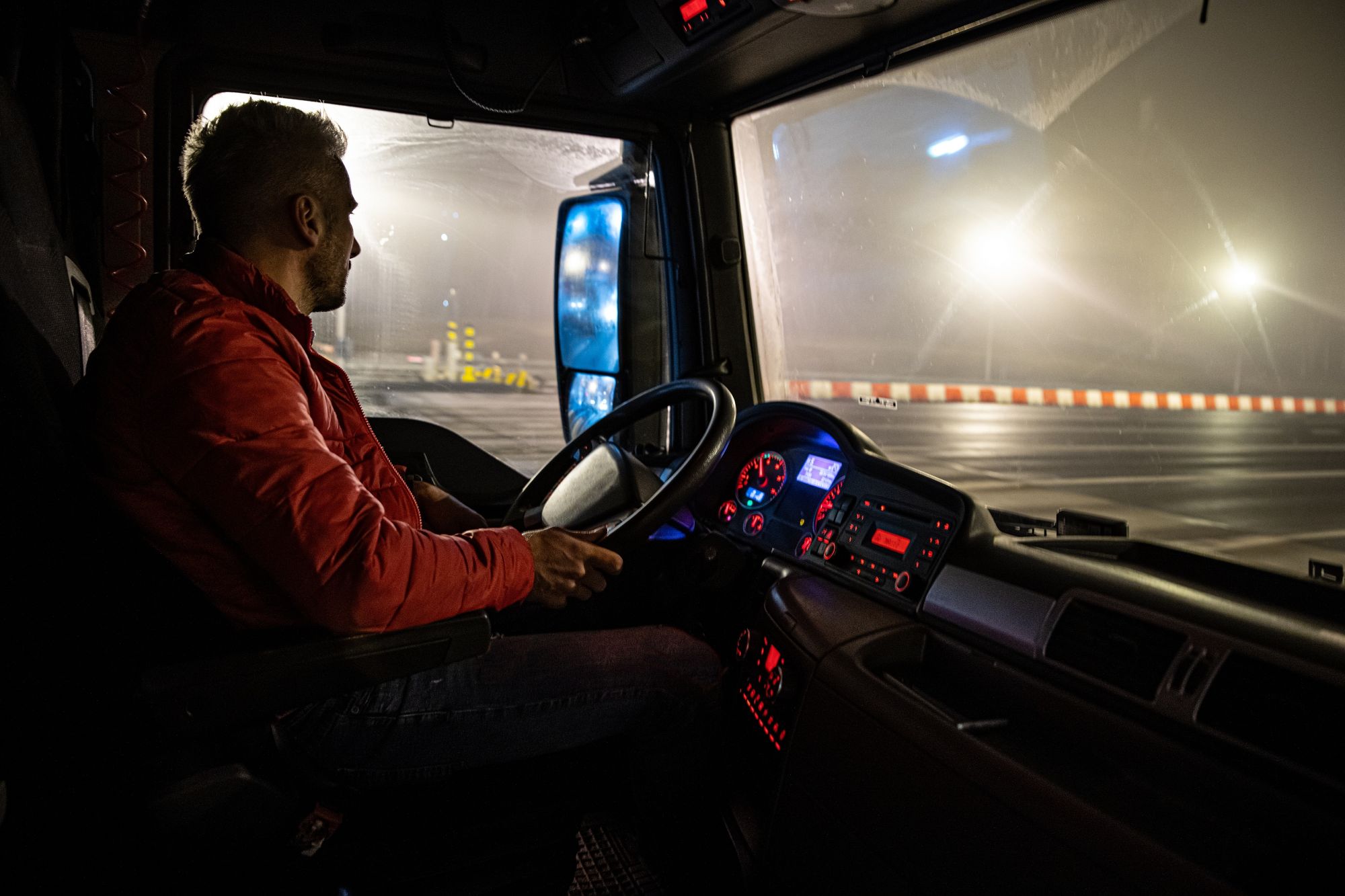
Guest
Se redeschide frontiera polono-ucraineană: Ce trebuie să știe operatorii de flote
Creat: 18.06.2025
•
Actualizat: 20.06.2025
După luni de întreruperi, traficul de mărfuri între Polonia și Ucraina se desfășoară din nou liber. Cu toate acestea, în condițiile în care tensiunile sunt încă aprinse și amenințarea unor noi blocade este prezentă în mintea tuturor, operatorii de flote trebuie să rămână atenți la riscuri și pregătiți să protejeze bunăstarea șoferilor de ambele părți ale frontierei.
Acest articol explică cauzele perturbării, modul în care a afectat șoferii și pașii pe care îi puteți lua pentru a reduce impactul în cazul în care se reia acțiunea industrială.
Care a fost cauza blocadei frontierei Polonia-Ucraina din 2024?
Situația a început la sfârșitul anului 2023, când șoferii polonezi de camioane au început să protesteze la principalele puncte de trecere a frontierei. Aceștia au susținut că decizia UE de a renunța la cerințele privind permisele pentru transportatorii ucraineni - introdusă ca măsură temporară pe timp de război - a condus la un aflux de operatori cu costuri mai mici, care subcotau firmele poloneze.
Protestele au escaladat, blocând principalele rute de transport de marfă către Ucraina și blocând mii de vehicule în cozi care se întindeau pe kilometri întregi. La apogeu, blocada a lăsat [peste 5 000 de camioane blocate] (https://www.npr.org/2024/01/07/1223065019/20-mile-backup-as-polish-truckers-blockade-border-in-standoff-with-ukrainian-dri) la frontieră, unele așteptând mai mult de o săptămână pentru a trece. De asemenea, șoferii din UE care nu sunt ucraineni au suferit întârzieri mari, programe încărcate și condiții precare.
Ceea ce a început ca o dispută logistică s-a transformat într-un protest mai amplu al transportatorilor polonezi cu privire la importurile ucrainene, accesul pe piață și impactul măsurilor de urgență ale UE în domeniul transporturilor. Agricultorii polonezi s-au alăturat în curând, frustrați de efectul produselor agricole ucrainene asupra prețurilor interne.
De asemenea, șoferii polonezi [au criticat sistemul ucrainean de cozi electronice] (https://www.pravda.com.ua/eng/news/2023/11/29/7430863/) pentru trecerea frontierei - cunoscut sub numele de eCherha - susținând că acesta dezavantajează transportatorii din UE. În timp ce sistemul a fost conceput pentru a simplifica circulația mărfurilor, permițând transportatorilor să rezerve în prealabil sloturi de trecere, operatorii polonezi au susținut că acesta oferă firmelor ucrainene o mai mare flexibilitate și un acces mai rapid. Probleme precum barierele lingvistice, integrarea limitată cu sistemele logistice ale UE și punerea în aplicare inconsecventă au făcut ca mulți șoferi din UE să aștepte mai mult la frontieră, alimentând și mai mult percepția unui tratament inechitabil și contribuind la tulburările generale.
Cronologia blocajelor de la frontiera Polonia-Ucraina
Noiembrie 2023: Protestele încep la punctele de trecere Dorohusk, Hrebenne și Korczowa.
Decembrie 2023: Mai multe puncte de trecere sunt blocate, inclusiv Medyka; trei șoferi ucraineni mor așteptând în cozi.
Ianuarie 2024: Guvernul polonez ajunge la un acord pentru a întrerupe blocada până în martie.
Martie-aprilie 2024: Se reiau blocajele sporadice la punctele de trecere mai mici.
Mai 2025: O nouă blocadă de patru luni a început la Yahodyn-Dorohusk, dar a fost anulată în instanță.
Iunie 2025: Toate punctele majore de trecere a frontierei rămân deschise, dar riscul unor perturbări viitoare persistă.
Ce face guvernul polonez pentru a îmbunătăți situația?
Ca răspuns la perturbare și la implicațiile sale mai largi, guvernul polonez a adoptat o atitudine proactivă. Punctele de trecere a frontierei cu Ucraina au fost desemnate ca infrastructură critică, ceea ce le oferă o protecție sporită împotriva viitoarelor blocade și contribuie la asigurarea fluxului continuu de mărfuri, ajutor umanitar și sprijin militar.
De asemenea, a fost înființat un nou Consiliu pentru cooperare cu Ucraina pentru a consolida în general legăturile dintre cele două țări. O parte din misiunea sa este de a îmbunătăți coordonarea în domeniul comerțului și al transporturilor. În paralel, Polonia investește în infrastructura de la frontiera estică și colaborează cu oficialii UE pentru a solicita condiții mai echitabile pentru transportatorii polonezi. Deși este posibil ca aceste acțiuni să nu rezolve situația peste noapte, ele semnalează un angajament pe termen lung pentru stabilitate și dialog structurat.

Impactul asupra șoferilor
Blocajul a creat condiții inacceptabile pentru șoferii profesioniști. Mulți au petrecut zile sau săptămâni în cabine, fără acces la toalete, mâncare sau apă curentă. Unii au fost blocați la temperaturi scăzute, fără încălzire sau adăpost.
Trei șoferi ucraineni au murit în timpul perioadei de blocadă, epuizarea și condițiile medicale netratate fiind considerate factori contributivi.
De asemenea, perturbările au cauzat o presiune psihică și emoțională semnificativă, în special pentru șoferii ucraineni care încercau să ajungă sau să se întoarcă acasă în timp de război. Întârzierile au afectat nu numai comerțul, ci și circulația combustibilului, a ajutoarelor și a bunurilor militare esențiale pentru apărarea națională a Ucrainei.
În timp ce protestatarii polonezi au insistat că vehiculele de ajutor umanitar și militar au fost autorizate să treacă granița, rapoartele autorităților ucrainene indică faptul că acest lucru nu a fost întotdeauna valabil.
Aceste condiții nu au fost traumatizante doar pentru șoferi, ci au scos la iveală și lacune în gestionarea riscurilor și în planificarea situațiilor de urgență. Operatorii trebuie să trateze acum perturbarea frontierelor ca pe o amenințare continuă.
Ce trebuie să știe operatorii de flote
Deși situația s-a stabilizat, tensiunile fundamentale dintre transportatorii polonezi, operatorii ucraineni și politica UE rămân nerezolvate. Managerii de flote care operează în regiune sau în apropierea acesteia ar trebui să fie atenți la posibilitatea unor noi acțiuni sindicale - în special în timpul punctelor de presiune sezoniere sau al revizuirii politicilor UE.
Iată recomandările echipei SNAP pentru gestionarea eficientă a situației:
1. Monitorizați situația de la frontiera polono-ucraineană
Fiți la curent cu știrile de la asociațiile poloneze și ucrainene de logistică și de la surse guvernamentale. Abonați-vă la alertele privind traficul la frontieră și urmăriți partenerii logistici de încredere pentru actualizări în timp real.
2. Planificați rute flexibile
Aveți planuri de urgență care redirecționează vehiculele prin Ungaria, Slovacia sau România în cazul în care punctele de trecere dintre Polonia și Ucraina sunt blocate din nou.
3. Sprijiniți bunăstarea șoferilor
Asigurați-vă că camioanele dvs. sunt aprovizionate cu produse esențiale: alimente, apă, acumulatori de energie și truse medicale.
În timpul perioadelor de neliniște, accesul la parcări securizate pentru camioane în Polonia este esențial, astfel încât șoferii dumneavoastră să fie în siguranță, odihniți și în afara drumului. Puneți la dispoziția șoferilor informații actualizate cu privire la parcările sigure pentru camioane și zonele de odihnă de pe traseul lor.
Aplicația noastră [intruck] (https://intruckapp.com/) are o hartă interactivă a parcărilor pentru camioane, cu 11 000 de furnizori de servicii HGV din Europa, inclusiv Polonia, Ungaria și Slovacia. Este un instrument ușor de utilizat pentru a găsi zone sigure de odihnă pentru camioane în Polonia, ceea ce îl face deosebit de valoros în timpul perioadelor de acțiune industrială.
Deși aplicația nu oferă în prezent posibilitatea de a rezerva locuri de parcare pentru camioane în Ucraina, operatorii și șoferii ucraineni pot utiliza intruck pentru a localiza stații de odihnă fiabile în UE în timpul călătoriilor pe distanțe lungi sau în perioadele de perturbare.
4. Rezervați soluții sigure de parcare pentru camioane în Polonia
Având în vedere cererea crescută în timpul perioadelor de perturbare, rezervarea în avans este esențială. De asemenea, șoferii pot utiliza intruck pentru a găsi și rezerva în avans parcări de încredere pentru camioane în Polonia. Indiferent dacă vehiculele dvs. călătoresc adânc în Europa de Est sau se întorc spre vest, aceasta le permite șoferilor dvs. să acceseze parcări pentru camioane în apropiere de Varșovia și alte zone cu trafic intens.
5. Comunicați cu șoferii în mod regulat
Stabiliți programe de check-in, în special dacă sunt prevăzute așteptări lungi sau devieri. Asigurați-i pe șoferi că bunăstarea lor este o prioritate și oferiți-le sprijin dacă se confruntă cu întârzieri neașteptate. Dacă este posibil, sugerați în avans locuri sigure de parcare a camioanelor în Ucraina, astfel încât aceștia să știe unde să ia o pauză.
Privind înainte
Redeschiderea frontierei Polonia-Ucraina este o veste bună pentru flotele care operează în Europa de Est. Dar, cu tensiunile politice nerezolvate, este esențial să rămâneți pregătiți.
"Situația se schimbă rapid", spune Nick Renton, șef al departamentului european de strategie și dezvoltare a afacerilor la SNAP. "Având în vedere potențialul unor perturbări suplimentare la granița dintre Polonia și Ucraina, recomandăm operatorilor de flote să pună în aplicare planuri solide pentru a acorda prioritate bunăstării șoferilor și a minimiza riscurile operaționale. Aceasta include introducerea flexibilității în programele de livrare, asigurarea de provizii esențiale în vehicule și asigurarea accesului șoferilor la o parcare sigură pentru camioane.
"Rețeaua noastră de stații de camioane rezervabile din Europa și Polonia vă oferă instrumentele necesare pentru a rămâne agili - oferind liniște atât operatorilor, cât și șoferilor atunci când condițiile de pe teren devin imprevizibile."
Vizualizați harta noastră interactivă a parcării securizate pentru camioane în Polonia astăzi.



